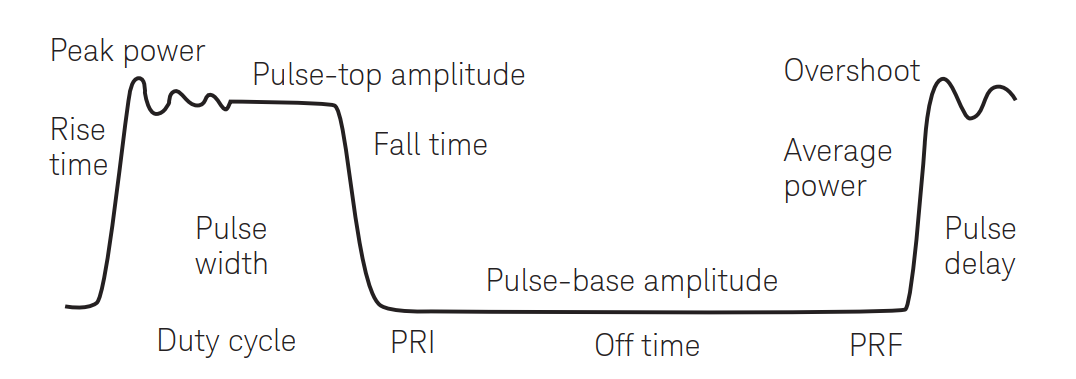Power level is an important parameter of an RF transmitter. In wireless systems, power levels need to be precisely controlled to avoid interference with other nodes in the system and maximize battery life. Therefore, we need to know the power level of the transmitter and control it accurately.
Saluki S2438 series Microwave Power Meter is a high-performance, general-purpose average/peak microwave power measurement instrument designed to measure average power, peak power, and pulse envelope power of microwave signals covers frequency from 9kHz to 500GHz. It is composed of a host of microwave power meter and a series of microwave power sensors including CW power sensor, peak power sensor and millimeter power sensor.
Meanwhile, S2438 series microwave power meter is a good substitute of Keysight N1911A / N1912A/ N1913A/ N1914A.
CW Measurement
The most basic power measurement is determining the power present in a steady continuous wave (CW) signal. Figure 1 shows how a classic RF power meter is configured. The key component is the power sensor which produces a DC voltage proportional to the power present in the signal. There are a wide variety of sensor technologies used for power measurement, including thermistors, thermocouples, and diode detectors.

Figure 1 A classic RF power meter measures the power in a CW RF signal
The classic RF power meter is a small bench instrument that accepts different types of power sensors and displays the measured results, just like S2438 series power meter. Meanwhile, Saluki also has compact power sensors with USB connectors that connect to a computer, which acts as our processing and display device, such as S8723X series CW Power Sensor, S87235 series Average Power Sensor. And the USB power sensors can also attach to test equipment such as spectrum analyzers or network analyzers to enhance their measurement capability.
Pulsed RF measurement
A simple RF power measurement need not be particularly fast if the signal is stable and we just want to know the average power level. For more complex signals, however, we might also be interested in the dynamic power characteristics. Figure 2 shows the measurement of a pulsed RF signal. In this case, the power sensor must respond quickly enough to track the signal power. The output of the sensor is p(t), a voltage proportional to the average power in the signal, as a function of time. This signal is captured by a high-speed analog-to-digital converter (ADC), manipulated by the processor, and displayed by the meter. Fig. 2 is also drawn generically, and the processor and display functions may be done by a dedicated instrument or by a computer.

Figure 2 A peak power meter can measure power in a pulsed RF signal
There is a limit to how fast the power meter can track pulsed RF signals. This is normally described as the video bandwidth of the meter, which refers to the bandwidth of the system after the sensor. The meter may also specify the minimum rise and fall time of the measurement.
With p(t) captured, we can treat it like a pulsed waveform and extract waveform parameters from it. Figure 2 shows the pulsed waveform with nice clean edges, but a more realistic view with finite rise/fall times and overshoot is shown in Figure 3. Standard waveform characteristics can be computed from the power waveform, similar to high-speed digital measurements.

Figure 3 This plot of instantaneous power shows various parameters of the signal power
The peak-to-average power ratio (PAPR) can be calculated from the waveform’s peak and average power. The pulse repetition interval (PRI), also called pulse repetition time (PRT), is the time between pulses. The pulse repetition frequency (PRF), or pulse repetition rate (PRR) is the reciprocal of the PRI.
Peak power meters can capture the power in the signal at a particular point in time. This usually involves a triggering system so that the measurement time is controllable and repeatable.
Part of the content is cited from EEWORLD:



